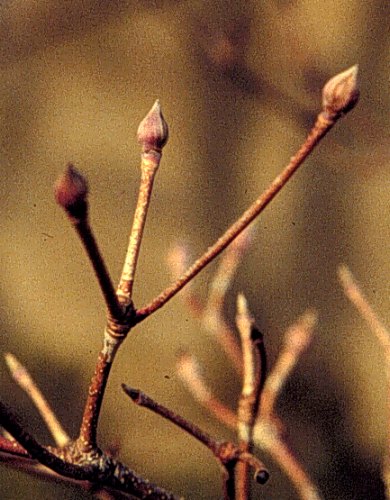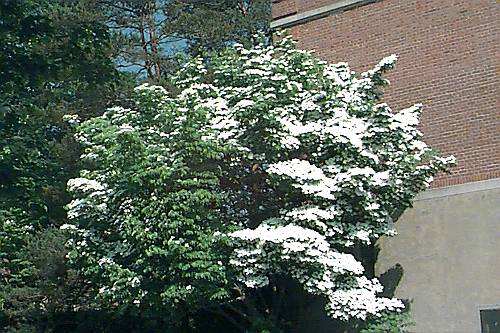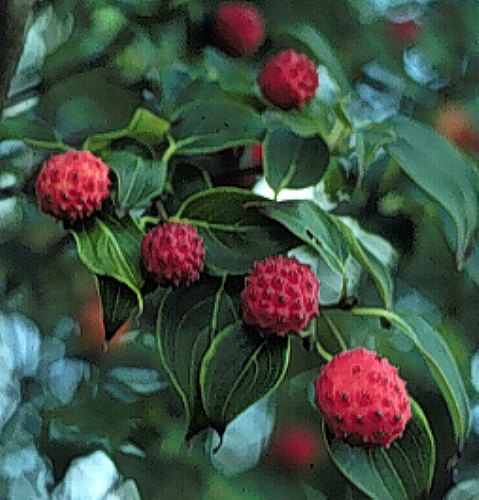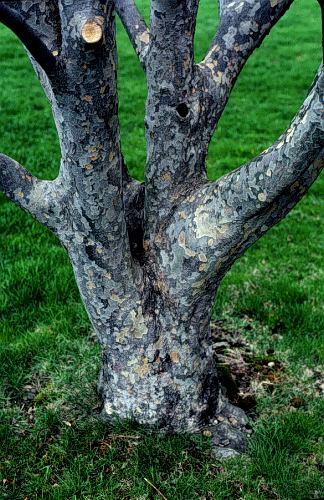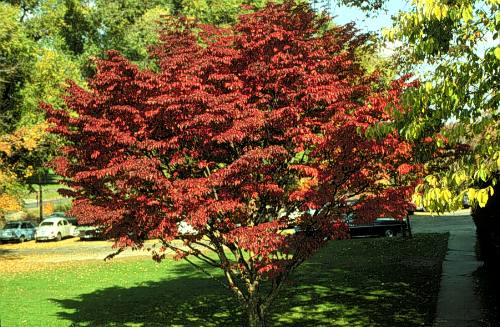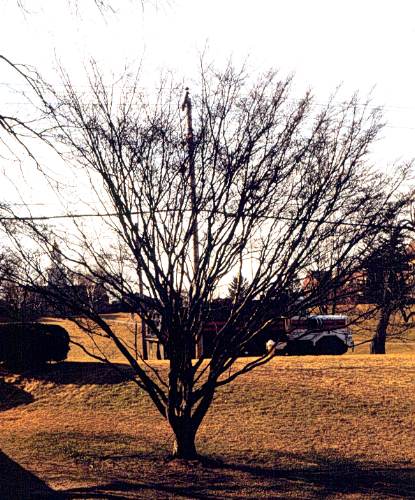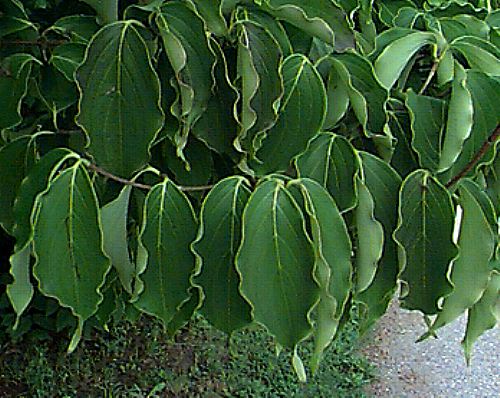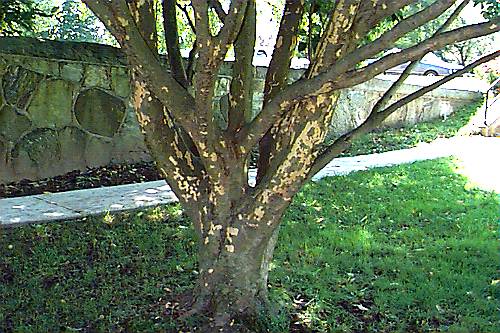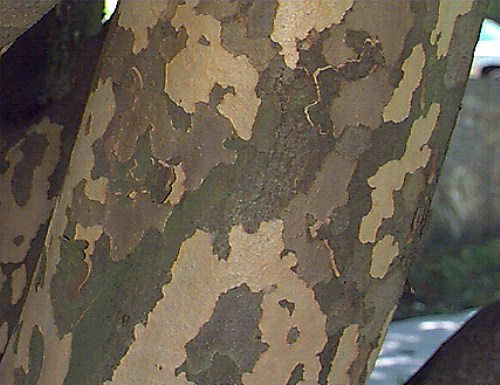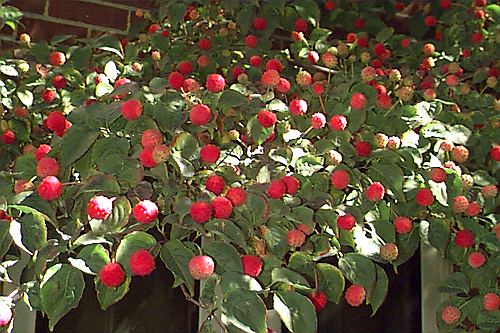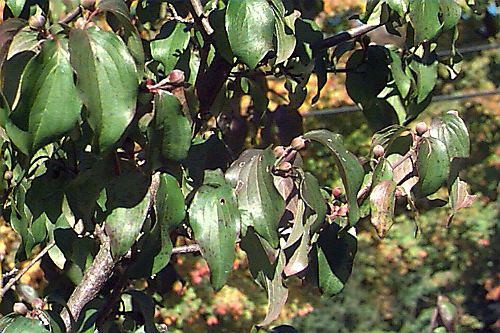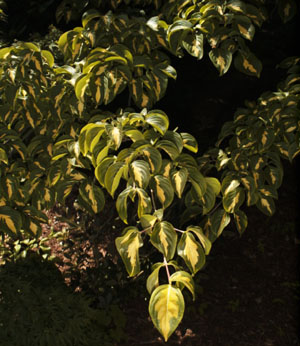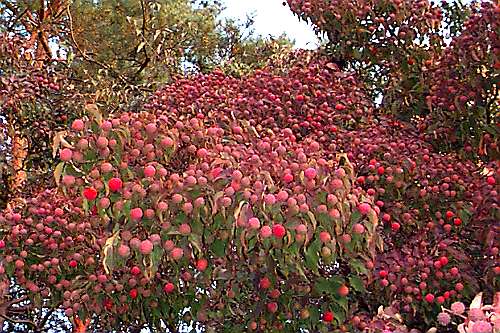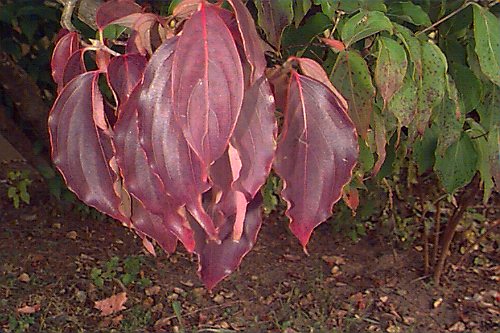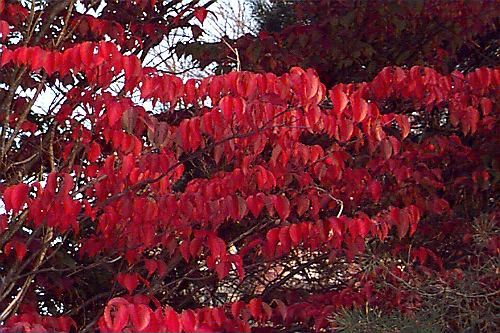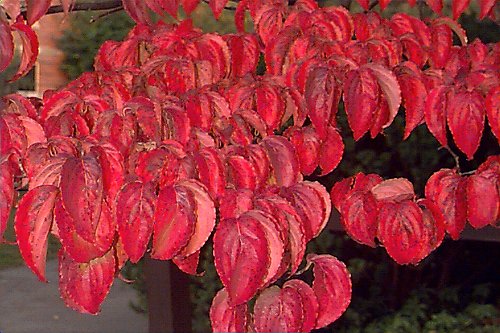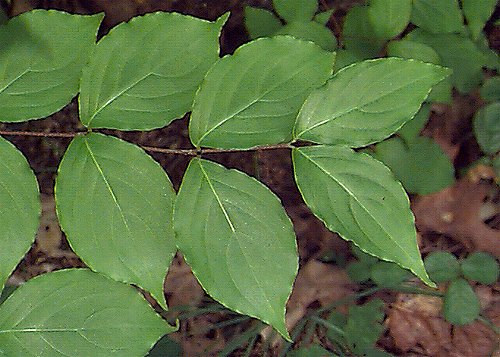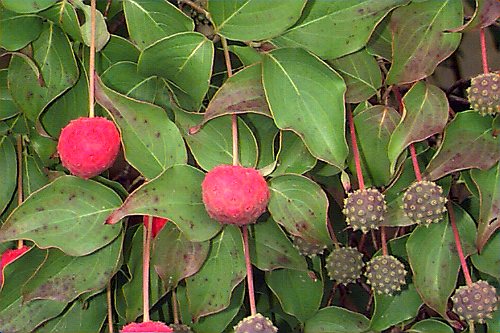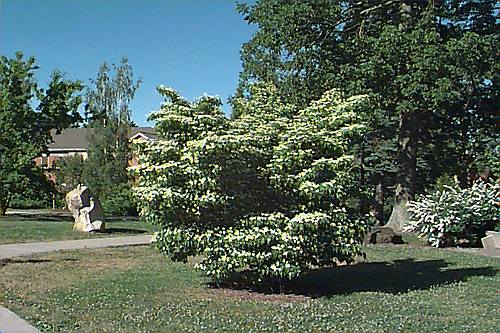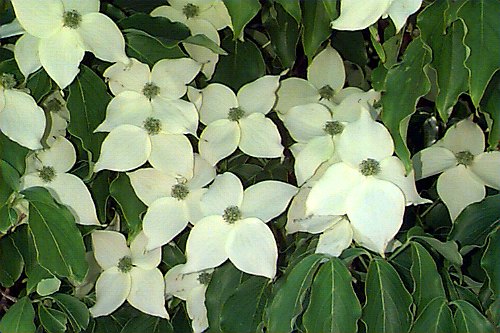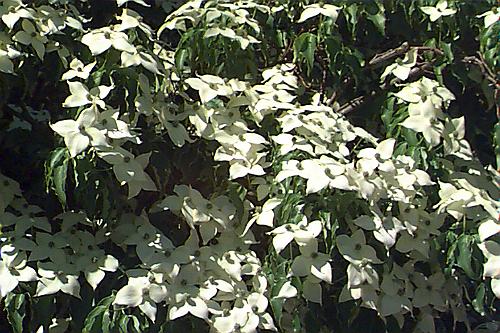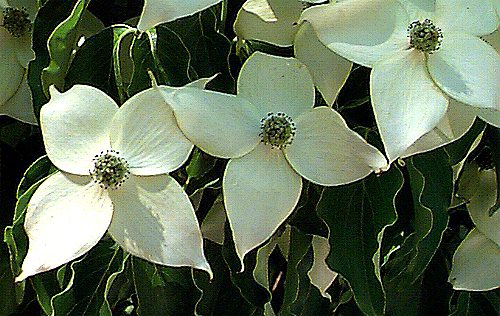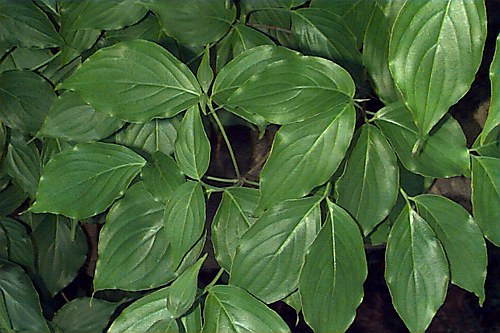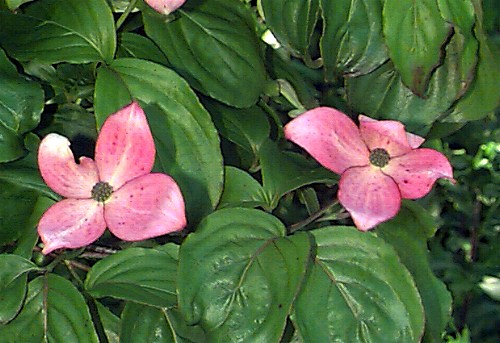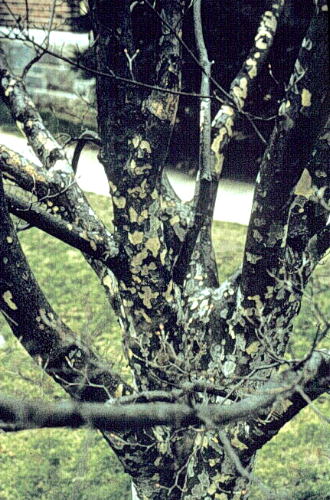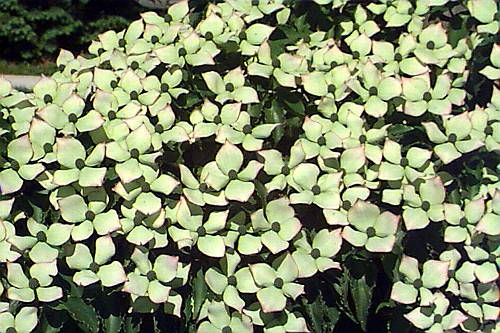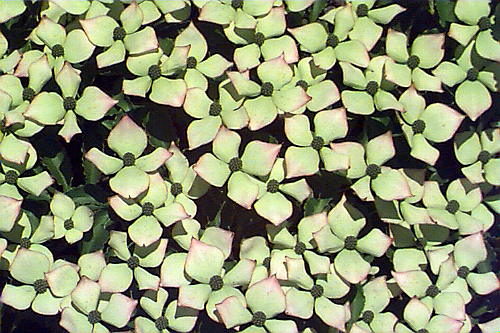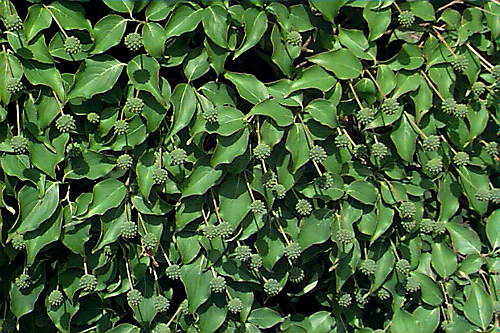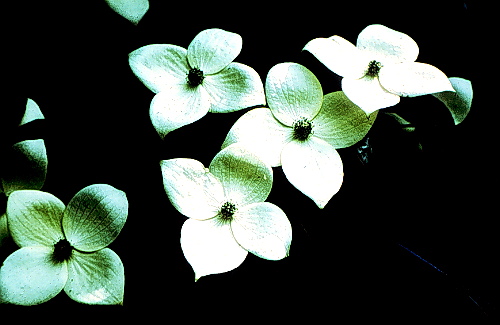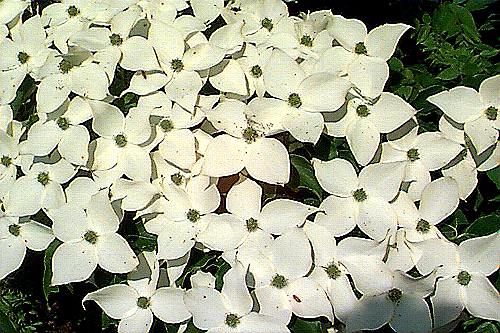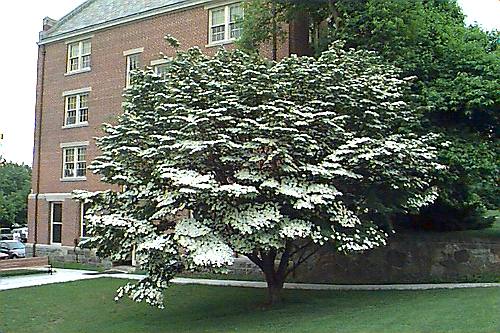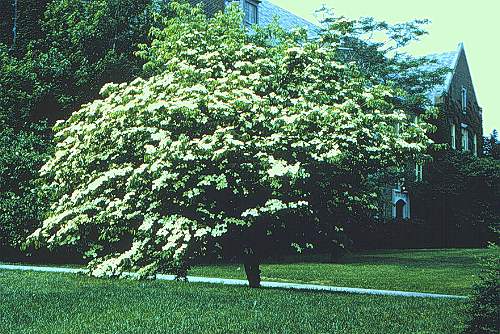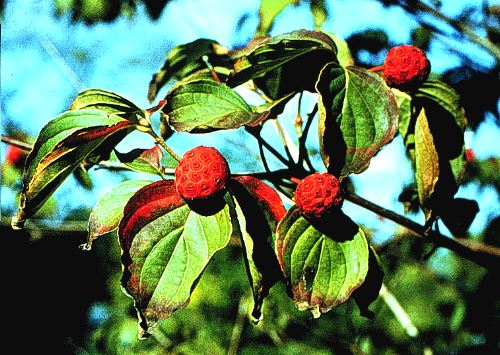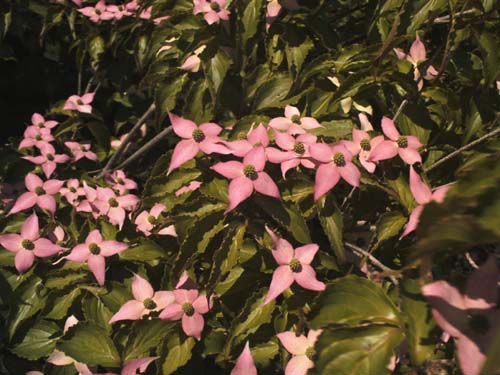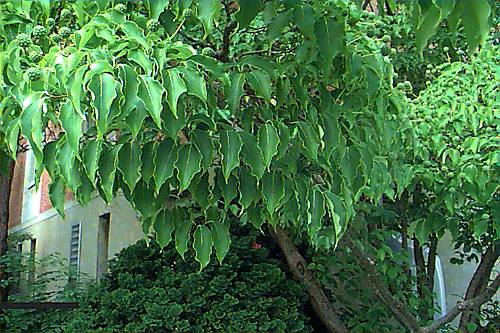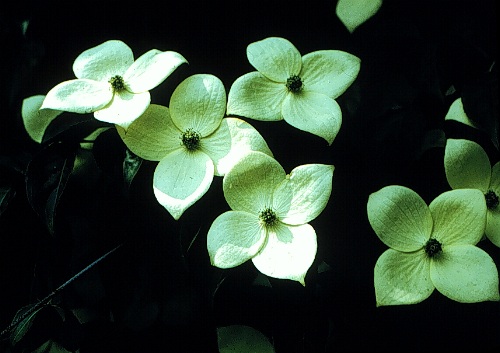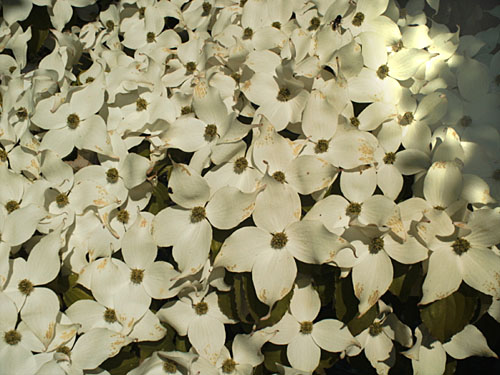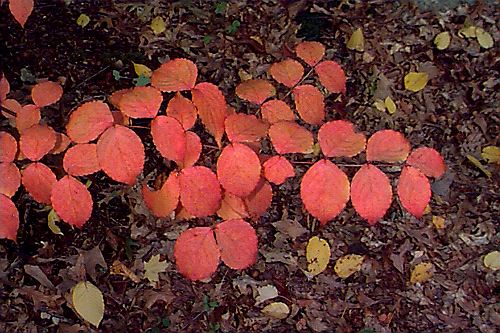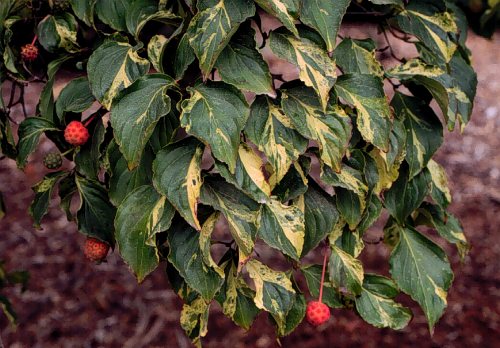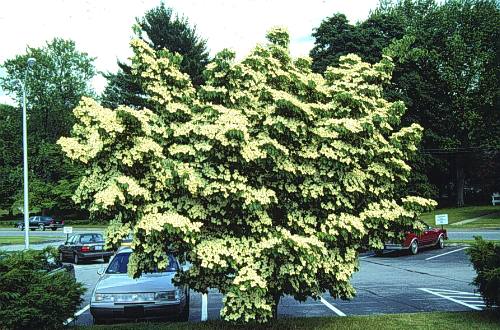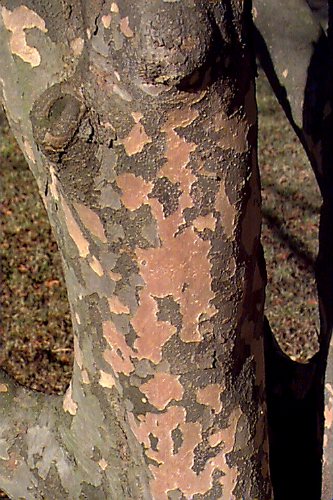Cornus kousa
Kousa Dogwood
Cornaceae
ExpandHabitat
- native to Japan, Korea and China
- hardy to zone 5
Habit and Form
- a small, deciduous tree
- reaching about 30' tall
- width equal to or greater than height
- shape is rounded at maturity
- young plants are vase-shaped
- branching is upright and spreading but becomes more horizontal and tiered with age
Summer Foliage
- opposite, simple leaves
- elliptic to ovate leaf shape
- acuminate leaf tip
- leaves 2" to 4" long and 0.75" to 1" wide
- tufts of hairs in the vein axils and the leaf undersides
- leaf color is a dark medium green
Autumn Foliage
- leaves turn red or red-purple
- color holds for at least a few weeks
Flowers
- flowers are small and greenish-yellow
- the flowers are surrounded by four large, showy, pointed bracts
- bracts are white, but age to pink
- bloom time is early June
- bracts last for about 6 weeks, making for a very long effective bloom time
- individual bracts are 1" to 2" long and about 0.5" to 0.75" wide
- flowers are held upright along stems
Fruit
- dull, raspberry red, pendant fruits when ripe
- ripe fruits look somewhat like large raspberries
- unripe, green fruits, stand upright along the stems
- ripening occurs form late august through October
- fruits are mealy, but edible
- fruit display can be showy
Bark
- older bark develops an exfoliating character, revealing a mix of gray-tan and mahogany brown
- the quality of the bark seems to be somewhat variable, but usually of ornamental interest
Culture
- full sun to partial shade
- prefers a moist, fertile, acidic , well-drained soil high in organic matter
- shows better drought resistance than C. florida
- it may be desirable to remove some lower branches to reveal the bark
Landscape Use
- specimen
- lawn tree
- small groups or groves
- patio tree
- useful as a multiseason plant
- ornamental appeal form habit, bark, flowering, fruiting and fall foliage color
Liabilities
- relatively problem free
ID Features
- a small, vase-shaped tree with horizontal branching
- mottled exfoliating bark
- pointed bract tips in comparison to the rounded bract tips of C. florida
- blooms about 2 or 3 weeks after C. florida
- red, raspberry-like fruits
- flower buds pointed and shaped like and onion
Propagation
- by cuttings, although not particularly easy
- by seed
Cultivars/Varieties
var. chinensis - This form supposedly flowers more freely and produces larger flower bracts, with leaves that are also said to be larger than average. The validity of this variety, however, is questioned by some authorities.
'Beni Fuji' - This form bears the deepest red-pink bracts of any C. kousa cultivar, even stronger than 'Satomi'. The color may not be as strong in warm summer areas.
'Elizabeth Lustgarten' and 'Lustgarten Weeping' - Notable for their weeping habits, this duo of cultivars grow to 15' with branches that arch downwards and bear white blooms. The habit is rounded and gentle, thus a mature specimen is attractive.
'Gold Star' - The center of each leaf has a broad gold band on this cultivar, with stems that are somewhat reddish. It is relatively slow-growing, but in time does form a small-medium rounded tree. The flower bracts are white, and the contrast between the red fruit and gold-splashed foliage can be striking.
'Little Beauty' - This plant forms a small, densely branched tree that may never exceed 15' tall. Other traits are as per the species.
'Milky Way' - One of the most common cultivars in the trade, this selection of var. chinensis is, however, probably composed of over a dozen similar clones. The plant is extremely floriferous and sets a very heavy crop of fruit. When in bloom, the pure white bracts can conceal the foliage.
'Satomi' (also listed as 'Rosabella') - This is a very popular cultivar said to develop bright pink bracts. In the United States, however, the warm summers seem to dull the color. As a result, most plants bloom light pink or white-pink. The color can vary from season to season, but 'Beni Fuji' probably has deeper pink bracts.
'Snowboy' - This form sports gray-green leaves that are edged in white, with occasional splashes of variegation throughout the foliage. While the plant is attractive when well grown, it is very slow-growing and is best sited in a shady location to avoid leaf scorch.
'Summer Stars' - The flower bracts on this selection are not as large as those of other cultivars, but they are retained longer. Blooms heavily and grows to 25' tall with a vase shape.'Temple Jewel' - This is an interesting variegated form with leaves that show a light marbling of green, gold and light pink that turns mostly green with age. It grows well to 20' tall and wider with a dense habit. The bracts are white.
'Variegata' - Various clones exist with differing degrees of yellow or white variegation. The pattern may be unstable, plus the plants can produce green growth reversions. Most are slower growing and benefit from siting in some shade.
'Wolf Eyes' - This is a very popular variegated form with leaves that show a uniform white margin. The leaf margins are often prominently wavy, as well. The variegation pattern is quite stable and resistant to burning, though a shaded planting site is still desirable. In fall, the leaves develop attractive pink to red coloration. The plant is shrubby and slow-growing, to 10' tall and wide.
